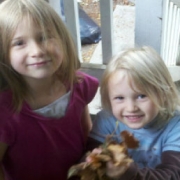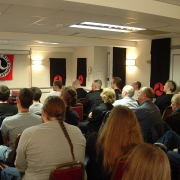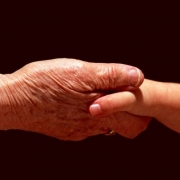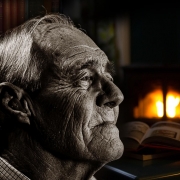Community: A Lesson from our Saxon Ancestors
by Heimgest CG
Today we hear a lot about the ‘community’. In most cases this is a corruption of the term, for it has little to do with the majority of the indigenous population, but is either a way of setting up ‘experts’ over us, to reduce our power to run our own affairs in ways best suited to us – hence the legion of ‘community officers’ – or else it is basically a code-name to give special categories special status or rights not given to the majority. Thus we will hear of the ‘Black Community’ demanding this or that, or being accorded special treatment, or the ‘Gay Community’ making its special demands and so on. The rest of the population, it often seems, are not part of any ‘community’. Things were not always so, of course and our ancestors really did think in terms of the community – the folk.
In those times much revolved around ‘the land’ and basically no one individual ‘owned’ the land as such. It belonged to the community, or rather they had custody of it and it was their duty to nurture and defend it as it in turn provided life for them. It was revered for it nourished them and provided physical needs. It was sacred, entrusted to their care by the Gods and enriched by the blood and sweat of the folk – the mystic and holy union of blood and soil. To exploit or harm the land was a crime against all – the living land itself and the people who lived on it. It was a desecration of the living entity which sustained them, and of the memory of the ancestors. To pollute it was to lessen the God forces which dwelt in the land, and was also a self-destructive action, for eventually the folk as a whole would suffer.
Our ancestors had a far greater awareness of the link of past, present and future, and the connections between the various factors of creation. Now most people have no conception at all of this exploit now, and hope that it’s not you who has to pay is the creed fostered by Government and the powers of finance. This, among other things, is the result of a loss of folk-consciousness. It is one of the things we Odinists must ceaselessly seek to restore again in our folk their folk-consciousness and pride and responsibility .
Our ancestors knew that the land was holy. If I have said that in those old days no one 1 owned ‘ the land, this did not mean that all land was held in ‘common’ as such, although in the highest sense it was, for the folk as a whole, families and individuals, had land considered private on which they could build their homes, work, cultivate, and so on to provide for the need of their families.
The land belonging to the tribe was divided into sections known as ‘hundreds’ so-called because the area was judged to be sufficient to support one hundred ‘Hearths’ or households. Because quality and type of land varies, the Hundreds were drawn up to include a fair division of grazing, farming land and so on, and a sensible right-of-way was common to all.
The ‘Common Lands’ were divided roughly into three groupings: grazing land, meadowland, and woodland/forests. The wood, or forest land provided fowl and other food; timber for building, tools and fuel; and often fish from the forest streams and pools. These provisions can still be seen in old leases. The grazing land provided for the herds, while the meadowland had several uses. The growing of crops, also hay for winter fodder. Because they were mown to provide the hay they were sometimes called ‘Mows’.
To ensure a fair distribution of fertile land, lots were distributed as evenly as possible among the folk. Sometimes this was left to the forces of Wyrd by drawing ‘lots’ at random. The hedgerows were also of great importance, and were deliberately planted with such things as hazel, sloe plums, medicinal plants, plants used for dying, making glue and soap, and so on. At times they needed to be cut back to stop them spreading chaotically, but again, nothing was wasted, as this provided plenty of kindling, and material for tools, brooms and so on.
We can see how important the land was to our forebears, and how its distribution was as fair as possible – a marked contrast to today. As the land was so important, if a lotholder and/or his family, failed to work the land assigned to them, it would, as a last resort, be taken away from them, and given to those who would use it. As I said, this action was a last resort. Everything possible would be done to help a family who through some misfortune were unable to work the land. But the land had to produce in order to support the community, so those unwilling to do their share would be a drain on everyone, and seen as not deserving the responsibility for a section of the sacred soil.
The division of the land into Hundreds also played a role in the running of the community. At a site, chosen for its religious significance, a mound was raised, made from earth brought from every Hearth in the Hundred. This bonded all the Hearths together. Upon this mound, a freeman could ‘stand on his own ground’ when the community met there to discuss community matters and dispense law. It was often near this mound that a ‘Hof’ was built, which itself often contained another mound – again created with earth from every Hearth.
Today some church grounds still have the outer mound, and it is a fair bet that the church is situated on a site of Odinist worship. One example of this is found in Chislehurst in Kent.
The mound outside the Hof was an essential part of society’s running. As said, a freeman could stand upon it and speak freely. Our past kin had a far greater right to free speech than we have today, where ferocious penalties and odium are dealt out to those who dare to speak freely on matters vital to the folk. In those days, at regular set times, each Hearth sent a representative to Moots held at the mound of speech. From this group one would be appointed to represent the Hundred at the Moots of all the Hundreds in that area, and again a representative from the Moot or Thing would be appointed to attend the National Moot, or Althing.
These were held on the quarterdays, four times a year, and it is from this that the Court ‘Quarter-sessions’ derive. Above this type of representative was a further group of people called ‘The Elders’. These were highly respected folk, chosen for their wisdom, and who had proved their worth. It was these who advised the tribal chieftain or King.
There was also a right of ‘common law’ by which an individual could make a direst petition to the tribal chief and Court of Appeal, for our ancestors were a real community which followed the words we speak in our ‘Jarl’s Rally’ – “May those who lead us be true, may those who follow be loyal so all are linked in a circle of honour and kinship.”
Although, in a material sense, they may have been less ‘well off’ than we are, their freedom, and the quality of their lives, must have been far greater.
They were not chained to the yoke of debt-finance – not hired as human robots – not set each man against the other.
As a lesson in an actual community supporting each other, interrelated with their home land, their Odal land which they lived on and which we still live on, it has much to teach us. We work for the day we can again take back our Odal lands from the greedy, the perverse, and the exploiter; the day when we can again nurture our land as it nurtures us; the day when we are again a true folk community.






